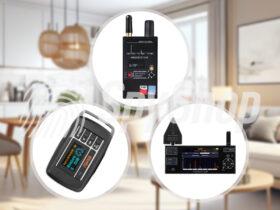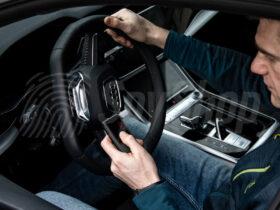Combinations of real and virtual images used to belong in films. Nowadays it is actually happening, and the Augmented Reality is constantly being improved.
Augmented Reality
What is augmented reality? In short, it is a combination of real image with a virtual one. It is usually done with a camera and a screen displaying 3D generated elements. Everything, of course, happens in real time. Such practice fared extremely well in medicine, aviation, or even video games. The illusion phenomenon is becoming more and more popular on smartphones, allowing the user to experience a bit of augmented reality without the need to spend large amounts of money.
How does it work?
Let us take a mobile phone as an example. It needs to be equipped with a camera, since it is the main source of the image, on which a number of elements are later applied. But where do they come from? A dedicated application (for a specific effect), utilising the camera and a physical marker (usually in the form of e.g. a sheet with a special code written on it) places new elements on the image displayed on the screen. In most cases, the graphics are ‘pinned‘ to the image, allowing either to view it from every angle by moving the smartphone, or to move it along with the device.
A 360‘ view is one of the most common variants of augmented reality. Companies frequently use it to present their products, e.g. cars or motorcycles, which – with the aid of a smartphone – can be viewed up close and often in detail (depending on how advanced a particular 3D model is) . This, however, is not the only solution! Where else can we encounter augmented reality?
Application
Medicine – the sight of a surgeon holding a tablet next to a slab would be downright surprising. However, it is no longer a mere vision of a science-fiction scriptwriter! Augmented Reality was used for medicine for the first time last year in Hamburg. What for exactly? The patient was undergoing a liver tumor removal, and the application allowed the surgeon to ‘see‘ on his tablet the exact distribution of blood vessels in the organ. It made it possible to conduct the surgery without damaging any of them.
Aviation – night, fog, or harsh weather conditions pose no problem to pilots, as the instruments installed in the cockpit display e.g. topography of the land below. But that is not all – there is ongoing research to improve the systems displaying in front of the pilot‘s eyes (wearing a specialist gear) all the information necessary e.g. to land in conditions of heavily limited visibility. Currently utilised ‘Enhanced Flight Vision Systems‘ is based on a similar principle, but cannot be considered as augmented reality.
Video games – Augmented Reality appears here as well. Everyone can try and play specifically designed games which, utilising cameras and e.g. a TV or a portable console, display camera image combined with computer generated elements.
Everyday life – Google went one step ahead, creating Google Glass. What is that? It is a pair of glasses, displaying computer generated elements in front of our eyes. It might be e.g. navigation, a notification about an incoming call, a calendar, or basically anything else. Google Glass use Android operating system, so new application are certain to appear over time.
Augmented Reality is an interesting issue, one that might prove very useful in various areas of life. It is curious, how long will it take for augmented reality to became as widespread, accessible and useful as e.g. mobile phones?











Leave a Reply